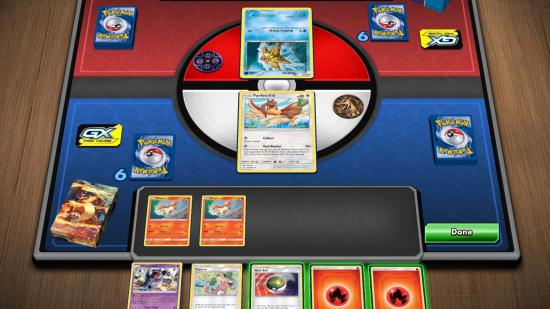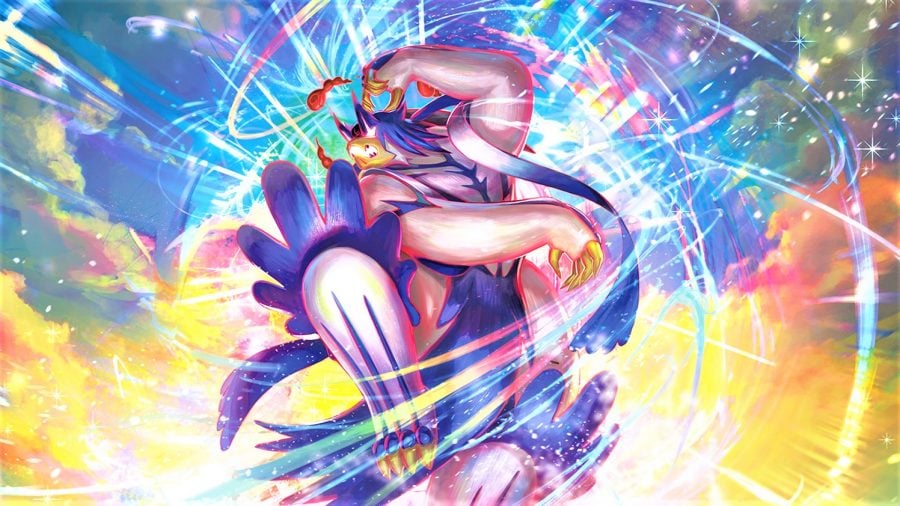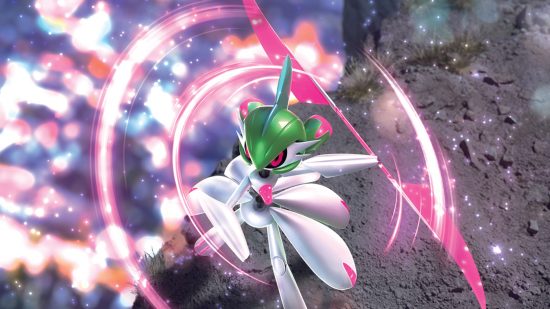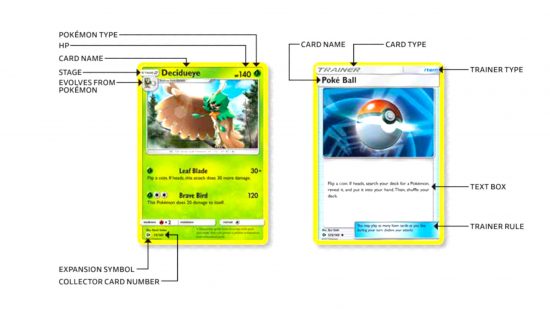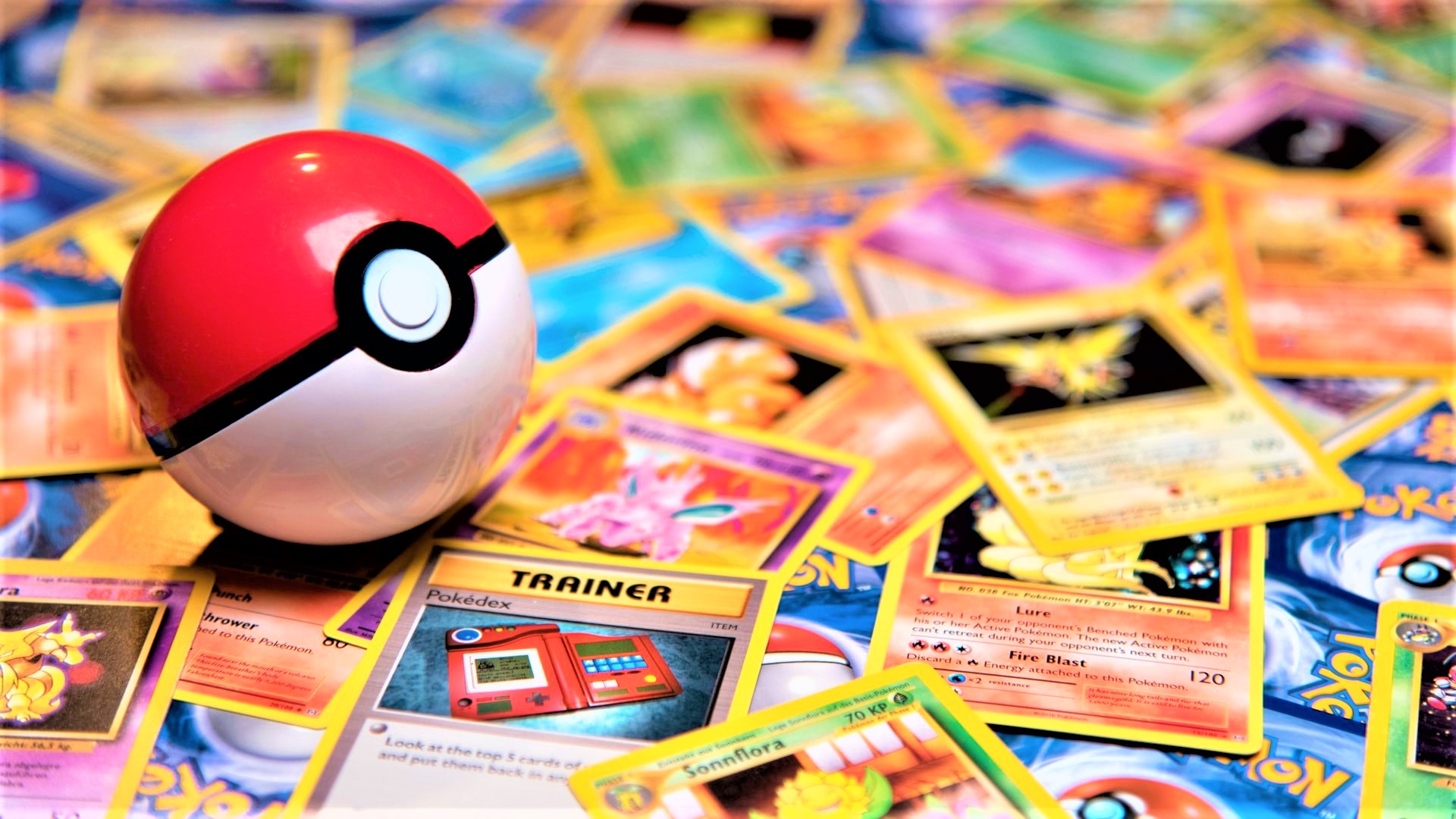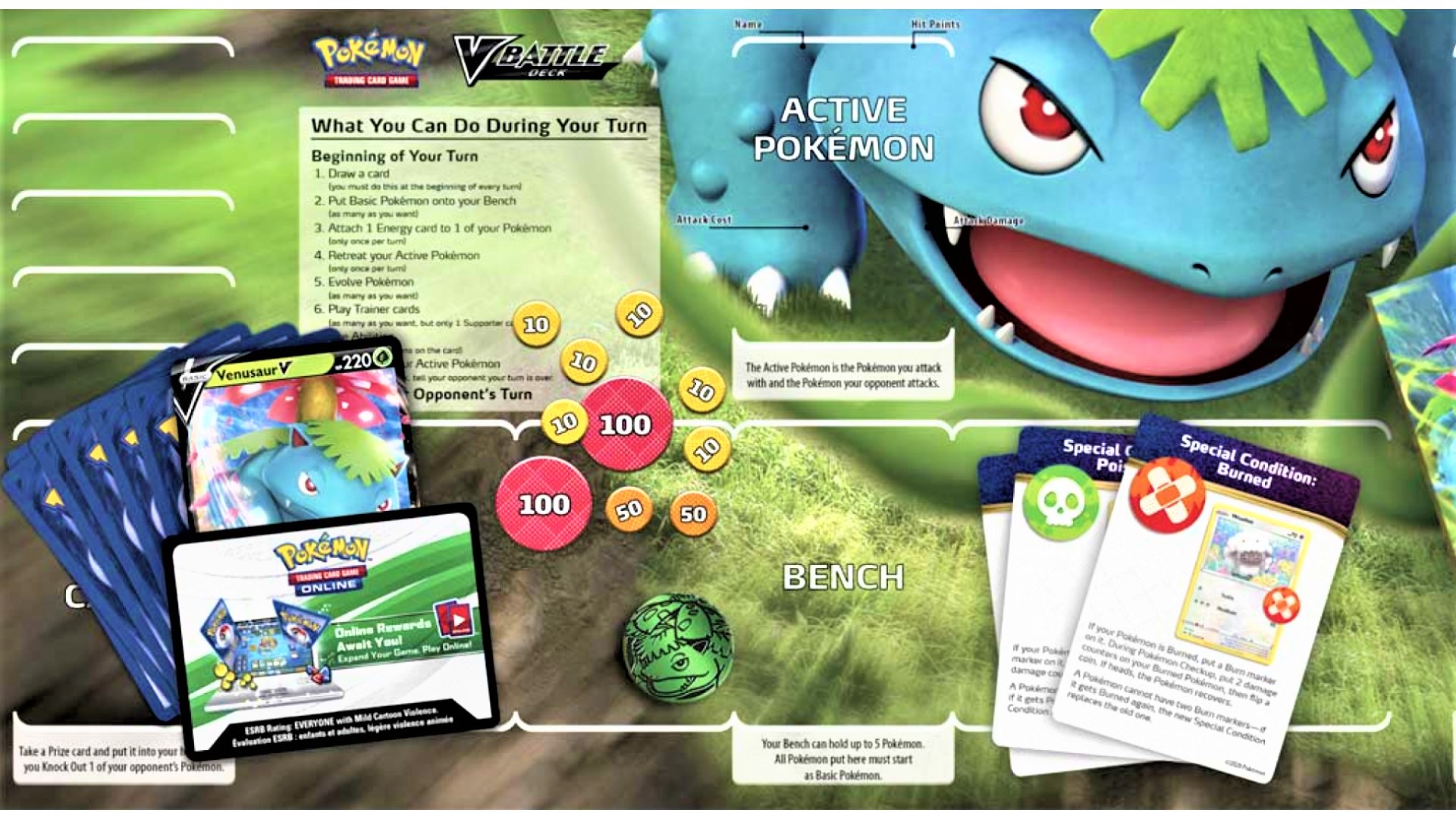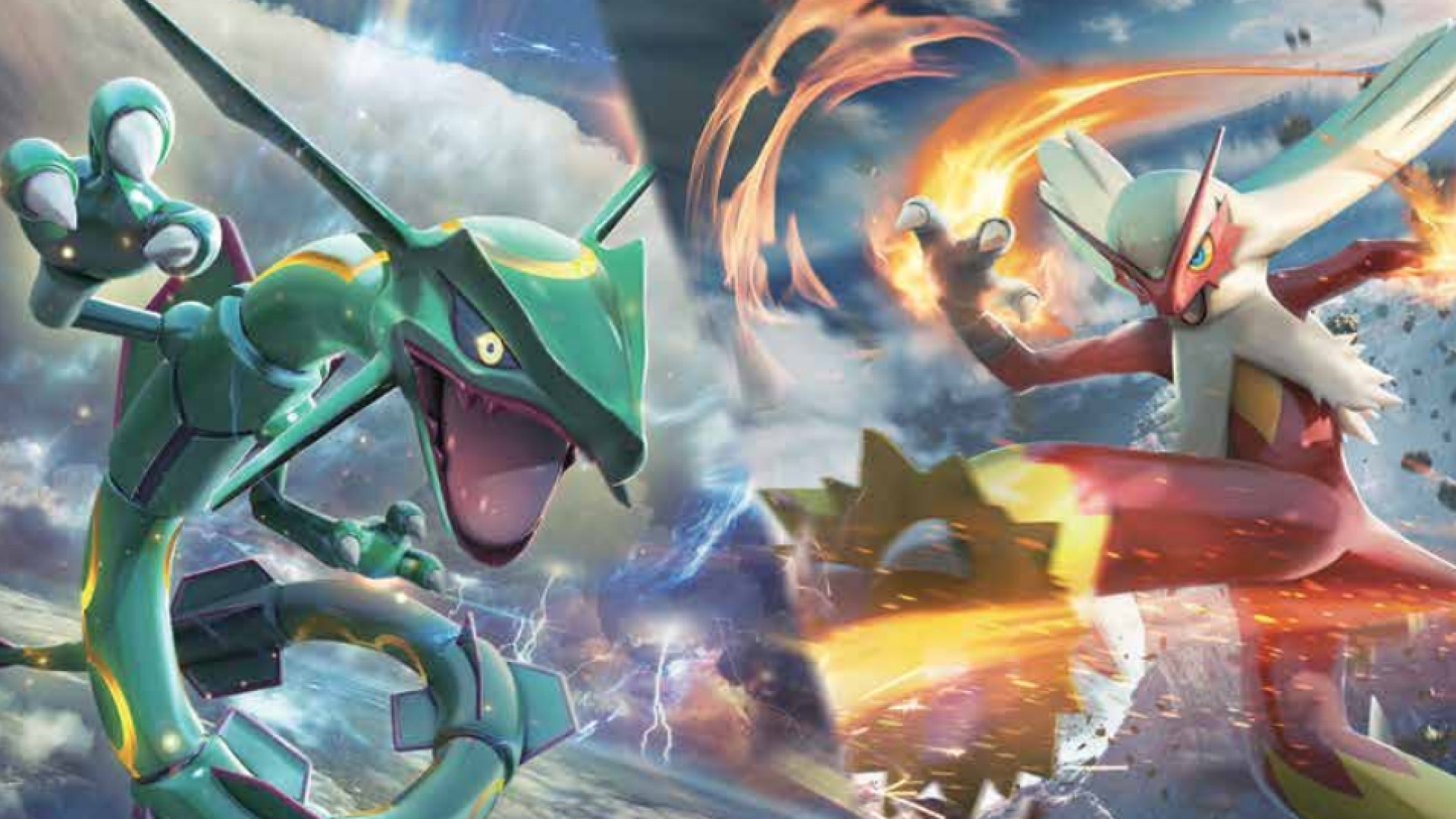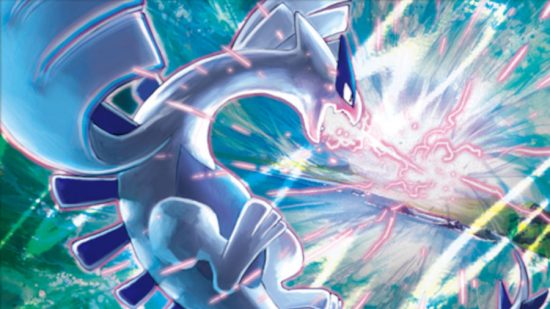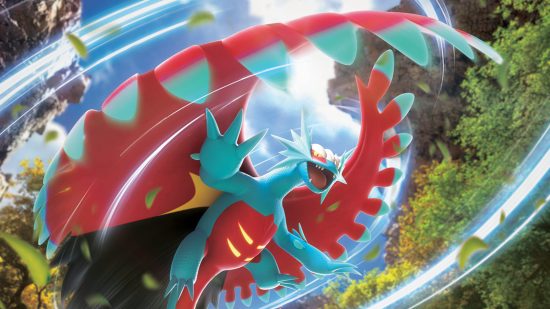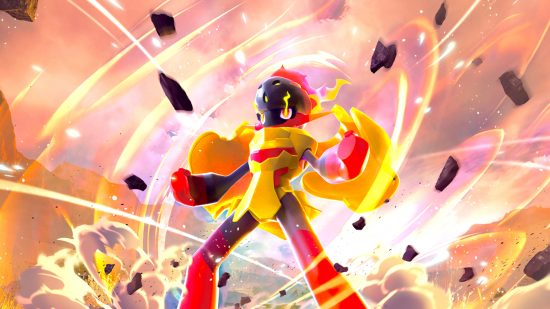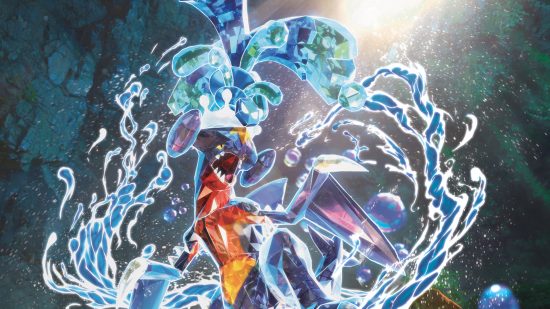So you want to learn how to play Pokémon cards? You’re in luck – the Pokémon card game is fantastic, and we’d love to teach you. This guide explains how to play Pokémon TCG for absolute beginners – from the basic rules, right through to claiming prize cards and declaring victory! Don’t panic – it’s easy to learn, and super-fun to play. In this tutorial, we’ll answer all your questions and get you ready to battle.
Once you’ve learned the Pokémon TCG rules and have a few battles under your belt, we’ve got loads more excellent guides to help you learn and grow in the Pokémon card game – like our updated list of the best Pokémon cards (many of which are among the strongest Pokémon cards and most rare Pokémon cards).
Here’s how to play Pokémon cards:
- What do I need to play Pokémon cards?
- Pokémon card types and how to understand them
- How to set up a Pokémon card game
- Pokémon TCG rules – how to play your first game
- How to evolve Pokémon in the Pokémon TCG
- How do you win in the Pokémon TCG?
- How do I play Pokémon cards online?
- Next steps
Once it’s time to expand your collection, we can also point you to the best Pokémon decks in the current competitive scene, the best value Pokémon booster boxes, and a full list of Pokémon TCG expansions – both past and upcoming.
Alright then, trainers – let’s get straight into that long grass and meet some wild Pokémon!
What do I need to play Pokémon cards?
You can start playing Pokémon cards two different ways: in person, with physical cards; or digitally via an app on your PC, phone, or tablet. We’ll cover how to play Pokémon cards online later on; if you like videogames in general, that’s another great way to start playing, and it has the special advantage of being absolutely free to get started.
But it’ll never replace the sociable, card-slinging fun of sitting together and playing Pokémon cards in person – and, for many of us Pokémon TCG hobbyists, collecting these beautiful cards is an essential part of the fun.
So let’s focus on the classic physical game for now. It’s really very simple to get started; you don’t need hundreds upon hundreds of cards to do it; and – since it’s a two-player card game – you only need to rope in one friend to play.
How many cards do I need to play?
To play a game of Pokémon TCG, you need 120 cards. That’s two 60-card decks, one for each player. Each deck will contain a variety of different card types, which all work together to help you win the game. We’ll explain how they all work shortly.
For now, the important question is: how should you get those first decks to play with? Of course, you can build a Pokémon deck yourself – and if you want help doing so, click that link to read our starter guide.
But if this is your first game, we strongly recommend buying a pre-built deck instead. There’s a bit of choice when it comes to these starter decks, though – so…
What are the best Pokémon TCG sets to buy first?
Walk into your local game store and you’ll likely see a whole bunch of different beginner-focused Pokémon card game products – and that’s great, but it can be a bit confusing.
So here’s our advice: your first purchase should be one of the following options:
- A Battle Deck that looks cool to you (or features your favorite Pokémon)
- The Pokémon TCG Battle Academy starter set.
Battle Decks include not only a well-composed deck ready for you to play, but also a folded paper playmat to play on, some helpful game tokens, a deck box to store your cards, and a nifty plastic coin (some Pokémon cards require you to flip a coin, and it’s always better when you use a shiny Pokémon TCG coin instead of a regular penny).
These decks will not win you a tournament, and will struggle against another player who has constructed their own deck. However, they are good for casual play, especially against other people who also bring a Battle Deck to the table. If you have a group of friends, buy a few different decks, shuffle up and start playing.
The Battle Academy makes things even simpler: it’s a single $20 box that contains three very basic 60-card starter decks, all the supporting bits and bobs from the battle decks, and a proper folding cardstock playing board with space for both players’ cards. The included decks won’t take you very far once you’ve learned the ropes – but it’s an excellent, cheap way to get started with no muss and no fuss.
So, now you’ve got all the Pokémon cards you need to play – let’s learn a bit about what they all do.
Pokémon card types and how to understand them
Before setting up and getting into a battle, you need to know what each Pokémon card type is supposed to mean, how to read it properly, and how it’ll work in the game.
You can learn everything you need to know about a Pokémon card from all the symbols and information printed on it – here’s a handy map to the card layout, from an official online manual published by the Pokémon Company:
Just like in the Pokémon videogames, each ‘mon has an elemental ‘type’ that affects its strengths and weaknesses (Decidueye above is Grass-type, as per the little leaf symbol). If you want to learn more about those, we have a whole guide to Pokémon TCG types you should read after this one.
To begin with, though, we just need to learn about the four overall types of Pokémon cards in the game:
- Basic Pokémon
- Evolution Pokémon
- Trainer cards
- Energy cards
During the game, you’ll start by playing down Basic Pokémon, using Energy cards to power them up, then using that energy to attack enemy Pokémon.
You’ll then be evolving them into Evolution Pokémon to make them stronger, thus accessing more powerful attacks, defeating more enemy Pokémon, and eventually winning the game.
Trainer cards are used to support these efforts by giving you extra benefits, or disadvantaging your opponent in some way. Some are simple, one-time boosts, while others tweak the game in complex and subtle ways that will work really well for some strategies, but harm others.
There are lots more sub-categories of cards you’ll encounter on your Pokémon TCG journey, from Supporter Trainers to special ex, V, VMAX, and VSTAR Pokémon cards – but you don’t need to worry about that stuff yet.
Those four main kinds of cards are the only ones you need to get started – and, now you know them, it’s time to set up your personal Pokémon stadium!
How to set up a Pokémon card game
To set up a Pokémon card game, players shuffle their 60-card deck and draw a hand of seven cards. Each player then places a Basic Pokémon (identified in the top left hand corner of a card), face down. This is their active Pokémon, which can battle and take damage.
If a player does not have a Basic-level Pokémon available, they must reveal their hand to their opponent, shuffle their cards back into their deck, and draw seven new cards. This is called a ‘mulligan’. Each time a mulligan is performed, the opposite player may elect to draw an extra card.

Players can then place up to five Basic-level Pokémon, face down, onto their bench area. Next, players draw another six cards from the top of their deck and place them face down to the side of the play area. These are your Prize Cards.
Finally, players flip a coin to determine who will go first, and then flip their active and benched Pokémon face up. It’s finally time to battle!
Pokémon TCG rules – how to play your first game
Like most trading card games, in the Pokémon TCG you and your opponent will alternate your turns, with each of you using your turn to draw cards, play down new cards, attack, and so on.
Whoever won the coin toss is the ‘first player’ and starts the game – but, importantly, the first player cannot attack on their first turn, and neither player can evolve a Pokémon on their first turn.
Other than that, it’s game on!

Pokémon TCG turn phases
Each turn is split into three turn phases, and they’re dead simple – here’s how they work:
Phase 1: Draw a card.
Phase 2: You can do any of the following, in any order:
- Add Basic Pokémon to your Bench. Place any number of basic Pokémon from your hand onto the bench in a face up position. Your bench can have a maximum of five Pokémon placed at once.
- Evolve your Pokémon. There are Basic, Stage 1, Stage 2 and VMAX Pokémon available in the game. Each evolution card details the Pokémon it evolves from in the upper-left hand corner of the card. You can evolve as many Pokémon as you want in a turn. However, you may only level up a Pokémon one stage per turn.
- Attach an Energy card to a Pokémon. Attach a single Energy card from your hand onto any Pokémon. Only one energy card may be attached to a Pokémon per turn.
- Play Trainer cards. These cards represent the items, supporters, and stadiums a Trainer can use in battle. They allow you to heal Pokémon, draw more cards and do special actions (such as switch your active Pokémon with a benched Pokémon). You may only play one Supporter card and one Stadium card per turn.
- Retreat your active Pokémon. Swap your active Pokémon with a benched Pokémon. Each Pokémon must have the requisite number of energy attached to it (the retreat cost), in order to activate. The retreat cost can be found in the bottom right-hand corner of a creature card. You may only retreat one Pokémon per turn.
- Use a Pokémon’s abilities. Use any number of your Pokémon’s abilities (as listed in red on the card). You can use any number of abilities per turn.
Phase 3: Attack, using one of your active Pokémon’s attacks. To use a Pokémon’s attack, you need to have enough Energy attached to meet the printed cost. Note that, unless otherwise specified, you don’t discard Energy after you make an attack.
Once your active Pokémon has made its attack, your turn ends. It’s now the other player’s go!
How to evolve Pokémon in the Pokémon TCG
No grinding or rare candies required when you’re playing with Pokémon cards. To evolve a Pokémon in the Pokémon TCG, you simply place the card showing the evolved form of that Pokémon on top of it. You can do this whether the Pokémon you want to evolve is in the active zone or on your bench.
You can evolve any number of Pokémon during your turn, before you attack. However, you can only evolve each Pokémon once per turn (so no going from a basic to a stage 3 in one go) and you can’t evolve a Pokémon the same turn it is played to your bench.
Evolving a Pokémon doesn’t heal it for damage, but it does remove any debilitating status conditions causing it problems, which can come in handy. Pokémon Tools or Energy cards attached to your Pokémon will stay attached when you evolve.
You’ll usually want to be evolving Pokémon in every single game you play. That’s because evolved Pokémon cards are typically much stronger, with more HP and more powerful, damaging moves. A possible exception is Pokémon EX (not to be confused with ex – though, yes, that is very confusing). These count as basic Pokémon, so don’t have to be evolved. The downside is: they award extra Prize Cards when they’re KOd.
How do you win in the Pokémon TCG?
Each time you knock out an opposing player’s Pokémon, you draw one of your six Prize Cards: the ones placed reverently to the side of the play area during setup. This the first way to win a game: the first player to take all of their prize cards wins the game.
The other two ways are:
- A player may win if their opponent has no active or benched Pokémon left in play.
- A player wins if their opponent has no cards in their deck, when they go to draw a card at the beginning of their turn.
How do I play Pokémon cards online?
The best way to play Pokémon cards online in 2024 is the new official, free-to-play PC and mobile client, Pokémon TCG Live.
After various stages of regional beta testing, this new online and app version of the Pokémon card game launched properly in June 2023, and it’s now fully operational on PC, Mac, iOS, and Android.
The TCG’s previous digital platform – Pokémon TCG Online – had been running since 2011, but was shut down on June 5, 2023.
Pokémon TCG Live has taken a bit of time to ‘bed in’ among players, but by all accounts it’s a huge improvement on its predecessor, adding not just better visuals, but a bunch of new progression features including a new Battle Pass system.
Can I use my physical cards on Pokémon TCG Live?
Sadly, your physical Pokémon card collection can’t be transferred directly into the digital game, card by card; they’re two separate things.
However, all kinds of physical Pokémon TCG products, including booster packs, pre-built decks, and more, all come with a Pokémon TCG Live code card inside.
Use the Pokémon TCG Live app to scan the QR code on these cards, and you’ll unlock a parallel, digital version of the same product to open and add to your personal, online collection – be it a booster pack of random new cards, or an entire deck of listed cards.
If you’ve got some older physical Pokémon card packs that have Pokémon TCG Online codes instead of Pokémon TCG Live ones, don’t worry – they’ll still redeem fine on the new platform.
Next steps
Once you have some battles under your belt, and feel like delving deeper into the game, you can look into purchasing an Elite Trainer Box.
These products are a broad-based upgrade to your collection, to help with both games and building new decks – you’ll get some booster packs, Energy cards (which are used in all decks), card sleeves and condition markers (to show when a Pokémon is asleep, burned, confused, paralysed or poisoned).
After that, it depends on what you want from the game. If you want to start playing a bit more seriously, then you should find a competitive deck within the current meta (using websites such as LimitlessTCG).
You can then start buying single cards (singles), from online stores to assemble the deck. Buying singles is always cheaper, and more efficient, than trying to create a deck by opening randomised booster packs.
You might also buy a booster box (which contains 36 booster packs). This is useful if you just want to amass a large number of random cards—at the lowest possible price per pack (or if you just want to experience the inimitable serotonin waterfall of cracking open 36 delicious foil packets full of brand new cards, one after another).
However, new players are unlikely to open all the cards they need to make a Standard legal deck this way. Ultimately, booster boxes tend to be geared towards collectors or entrenched players, as it offers them a more even distribution of cards within a set. With that all said, “cracking packs is fun” is, and always will be, a perfectly legitimate reason to buy a box. Take it from us.
So there you have it… whether you decide to play physical, digital or both, the extraordinary world of Pokémon awaits. What are you waiting for? Go grab yourself a Theme or Battle Deck, and start battling.
Fancy a change from the monsters instead? Well, we can easily introduce you to our other favorite trading card games, like Magic: The Gathering or Yu-Gi-Oh. While Pokémon isn’t as simple as some claim, these games will certainly add some strategic depth and complexity in places.
Alternatively, if you want to leave TCGs behind for a bit – Pokémon Go is still a thing! Check out our sister site Pocket Tactics’ guide to the latest Pokémon Go promo codes.
